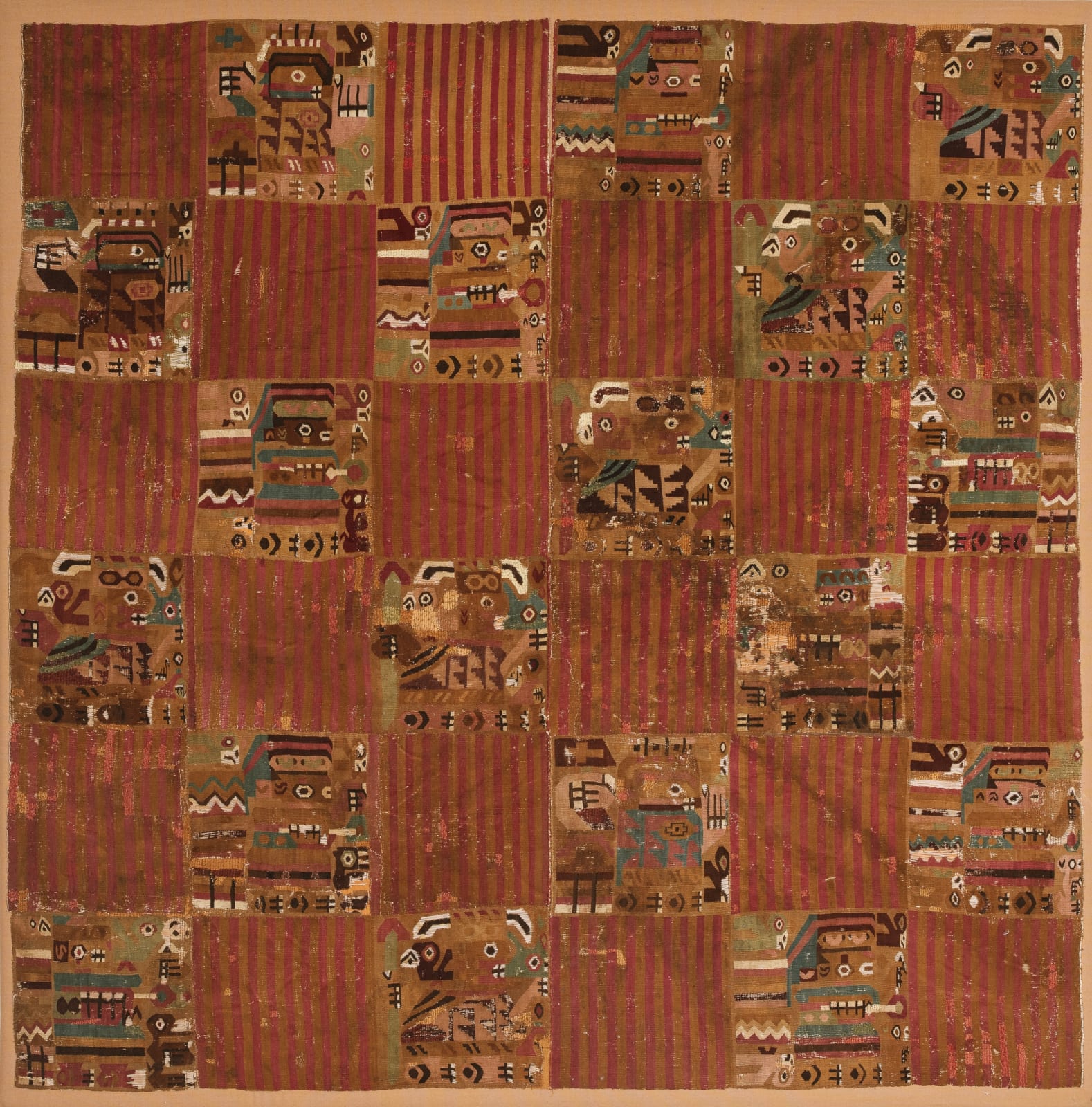


Huari Culture 100 AD-1200 AD
42,1 x 42,1 in
Frame size:
109,5 x 110,5 cm
Further images
The sophisticated designs of this remarkably fine and densely tapestry-woven tunic, the gar-ment of a Huari Shaman , demonstrate an aptitude for experimenting with stylised forms that are on par with many pioneers of abstraction in 20th- century art. This example is strikingly bold in colour allied to its highly stylised and mathematical in-genuity. The main pattern, worked in white, beige and red, represents geometricized heads, whose serrated backs form strong diagonals across the body of the shirt. Every element is subtly expanded in scale from the centre towards the edges, such change of scale and the stylisation of imagery from the centre to the borders was common to textiles associated with the Huari at this time. Chromatic relationships were also essential to the fragmentation and reconstruction of form; pattern analysis of textiles from this period indicates that colour almost certainly had symbolic as well as formal significance, although no written record exists to explain its com-plex system of consistence and anomaly. Considering the age and antiquity of these textiles, the intensity and vibrancy of their colours are remarkable, attesting to the skill of the dyers as well as to the artistry of the weavers.
Exhibitions
Ancient Textiles from the Andes, the Whitworth, Manchester, 2019Nosso Norte e o Sul, Our North is the South. Bergamin & Gomide, Sao Paulo. 2021
Publications
Ancient Textiles from the Andes, the Whitworth, Manchester, 2019Confluences in Art, p.115, Paul Hughes Fine Arts (2019)
Nosso Norte e o Sul, Our North is the South. Bergamin & Gomide 2021


